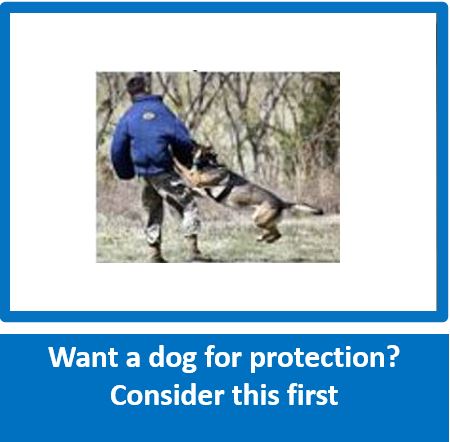
Please visit and LIKE our Facebook Page and share with family, friends and on your own Facebook page, and ask them to share further – it is only by working together and sharing knowledge and education that we can improve the lives of dogs and assist owners. We do not inundate you with posts – an average of 5 per week, and the odd Did You Know. Thank You!
Jumping Up - Changing & Preventing this Behaviour
By Scotty Valadao (Animal Behaviour Consultant (Canine) (ABC of SA™)

The reason that puppies jump up goes back to their natural behaviour – as the mother approaches, the puppy will jump up as a greeting and request food. The pup is actually not jumping up; rather it is standing on its rear legs and putting the paws on the mother or person.
When our little ball of fluff is just that, it is lovely to be greeted in that way – but what happens when our little ball of fluff grows up to weigh 50 kgs? If you think about it, we encourage the behaviour of greeting us by allowing jumping up and then cause total confusion when one day we decide it is not longer acceptable due to having visitors that won’t appreciate the behaviour, are wearing white pants, or a child comes to visit.
Preventing Jumping Up when a pup
The easiest way is prevention, which is better than cure. You have a totally blank canvas with a puppy, and it is up to you now as to what you do accept, and what you don’t. Simply don’t allow your puppy to jump, get him into the habit of calling him and then getting him to sit in front of you. This is especially important if your puppy is going to grow to a large size. Even if your pup is not going to be large, it is still a good habit to get into, as it stops dogs jumping on us when you have work clothes on or an armful of shopping or if there is a small child or elderly person visiting or staying with us. You would not allow your child to run and jump on a visitor (I hope not anyway!), then why do we not teach our dogs to approach people politely? Simple, we just haven’t thought of it that way! The exercises below to change the behaviour can be used with puppies for prevention as well.
Additionally, request a Sit for anything to pup wants, or does i.e. Sit before being given food, Sit before the ball is thrown, Sit before attention is given, Sit before going out the door - the list is endless.
Wrong Attention - Many owners, inadvertently, make the problem worse by shouting or screaming ‘no’ at the pup or dog. If the owner is a bit volatile they may excite the dog even more resulting in more of the undesired behaviour. Remembering that attention is attention to a dog, whether positive or negative, will give you an idea why this manner of behaving keeps on reinforcing the behaviour in the pup.
Being Inconsistent - Another reason that owners can reinforce this behaviour is by being inconsistent. Dogs work harder on a variable reward training system. This is simply because the dog does not know when the reward will be forthcoming so it keeps on trying – a bit like us humans keeping on feeding our money into a one armed bandit! Now if we look at the situation whereby we, as owners are not consistent, and shout sometimes, and accept the behaviour another time, the poor pup is totally confused! Because it has not been taught an alternative behaviour the pup will just keep on trying harder to get the reward of being greeted by the owner by continuing to jump up.
We often have a bad habit of telling our dogs what we don’t want, but often do not tell them what we do want! It is absolutely impossible to tell a dog to do nothing; we have to show the dog what we do want instead and then reward the dog accordingly for compliance - so while training, each and ever time your dog sits, whether requested or not, a quiet 'good sit' will help to reinforce the behaviour you do want.
One of the main reasons that dogs continue to jump up is because one member of the family allows it. With training, you have got to be consistent, no means no, not maybe, or this time its ok. So please do talk to all the members of the family and ensure everybody plays their parts accordingly or else you will end up with a situation whereby the dog does not jump on the owner, but still does it to the other family members and visitors.
Jumping up against your back -You may have found in your past dealings with dogs, that one particular dog you have come across will jump up against somebody’s backs instead - a very dangerous behaviour as they can easily send the person flying. This normally happens when people have used one of the old fashioned methods of getting dogs to stop jumping up – they knee them in the chest. Now all that happens is that the dog learns that jumping in the front doesn’t work so starts to jump up behind instead!
How to change the jumping up behaviour:-
- All jumping up behaviour to be ignored. Each and every time you pay attention you are rewarding the behaviour you don't want. Keep face straight, no talking or interacting, simply twist your body a bit so that dogs paws are removed. No pushing.
- Using the daily ration of food, call your dog, request a Sit (using both voice and hand signal at the same time) and as the bottom touches the floor, cue is 'Sit' and then offer one piece of kibble. Take a few steps away and repeat. Do this over and over - we are changing the old behaviour into an entirely new one, and the dog is being rewarded for same. Do this a lot around doors where dogs normally jump up more, in the garden and all around the home inside and out. In a very short period of time you will have changed the behaviour.
- If you are at home during the day, then do this throughout the day, feeding a piece of kibble at a time. For dogs that are really food driven and dive into their meals, rather give a small handful of food in the bowl and then use the rest throughout the day.
- After a few days (and some dogs take longer) when the dog is reliable sitting each and every time, then you will start to fade the reward.
- An extra exercise you can bring in which is great fun for the dog as well, is for the family to stand in a circle, or a distance from one another and call the dog back and forth, requesting a sit each and every time. Start slowly, and as the dog becomes proficient in this exercise, start to encourage the dog to run, gradually getting faster and faster. Dogs (and owners) love this exercise and when we have fun when we teach, likely to be much more successful.
As mentioned in the prevention for pups above, put the dog onto a Work to Earn schedule and request a Sit for anything the dog wants, or does i.e. Sit before being given food, Sit before the ball is thrown, Sit before attention is given, Sit before going out the door - the list is endless.
You can keep the motivation going after the behaviour has been successfully changed by taking a few pieces of kibble and at odd times call your dog to you, ask for s a Sit, Praise and treat.
Fading
When we teach a dog a new behaviour we work with a 100% continuous reinforcement schedule – the dog is rewarded every single time it performs the behaviour. However, the last thing anyone wants is to have a dog that only works for us when we have food available.
In order to ensure that the dog does not only work for food, we need to bring in a varied reinforcement schedule as soon as the dog understand the behaviour and is doing it on cue. This is very simple to achieve – instead of asking for one sit, ask for two in a row and then reward. Mix it up all the time, sometimes asking for a sequence of two sits in a row, other times reward every 3rd of 5th sit. Remember that if your dog has just learnt the behaviour don’t be in too much of a hurry and remember to stagger the rewards and work with where the dog is ‘at’.
By this I mean that if your dog has only been proficient in the sit exercise for a short period of time, don’t expect it to do 20 sits in a row. Not only will it be bored it will give up – you are asking too much of it too soon. Variable reinforcing tends to make a dog work harder, as it never knows when the reward will be forthcoming.
It is important to realize that to some dogs, other types of rewards may be more important than food. A dog that is toy driven can have the ball thrown or tossed for a reward instead of food. Verbal praise may be all some dogs requite or others will prefer a game of tuggies. Don’t forget the dog that is tactile, and a rub from you can be the best thing in its life. You can even bring in a mixture of the examples mentioned above and mix and match them, bearing in mind that it is best to use something that really motivates your dog. Be aware that when you are teaching a new behaviour you go back to 100% continuous reinforcement schedule.
What is important however is that once the dog is totally proficient when it comes to sitting, don't drop the rewards completely. Rather a reward on a varied basis is necessary to keep the dog motivated to perform different behaviours – would you work for your boss for no pay, especially on a continued basis?
Visitors
Before bringing visitors into the mix, it is important that the dog is sitting successfully for the family. When you bring in visitors, the exercise below can be done either on or off-lead, but do aim for success and don't be over confident - consider using the lead, especially if the dog tends to be over excited. As this is a new exercise to the dog, we will bring in the food treat after the praise has been given to help the dog to be successful. Once the dog is proficient in the exercise, fading can be started.
Once the dog is sitting nicely for family, then consider friends coming over for some 'dog training' work - you can always offer them a cuppa tea, or something stronger for their input!.
A way to do this is to invite several people over who arrive within about 30 minutes of one another, or the same person, to drive around the block and then come back inside and repeat the procedure - do this several times.
First thing you will do, is to change where the dog normally meets visitors, as the jumping up behaviour will have become a 'learned behaviour', and simply changing the location, will help you to be successful. You will explain to your visitor before they come what the procedure will be, how to stand, to listen to your instructions, and have a lot of small, very tasty and smelly treats with them.
Have the dog on lead (in the new location). Tell the visitor to stop a good way away, and just stand still - no talking and not interacting with dog at all. If the dog reacts to a ringing door bell, or noise of the gate or similar, then rather the visitor phones to say ready to come inside.
What is important here, is don't go any further until the dog is completely calm. if the dog is bouncing around, just hold onto the lead and pay no attention to the excited behaviour. The second the dog is calm, say 'good calm' or similar and offer a treat. Now concentrate on getting the dog to sit a few times, praising and treating - at this stage you are ready to go further - the dog is calm and in a balanced stare.
When you feel that your dog is calm, still holding onto the lead, ask the visitor to calmly call your dog, request a Sit, using the hand and verbal cue - the second the bottom hits the floor, quiet praise (we don't want to over excite the dog) and a treat is given. The owner then quietly calls the dog back and the sequence is repeated several times. If the dog does tend to get excited, then owner can walk towards the visitor with the dog on lead and continue as above.
After this give the dog a break for a run around or some scenting fun, and then the person can leave, go around the block and start again, or the new visitor arrives.
All it takes as you will seen from above, is repetition and consistency - as Gary Player once said 'the more I practice the luckier I get!




